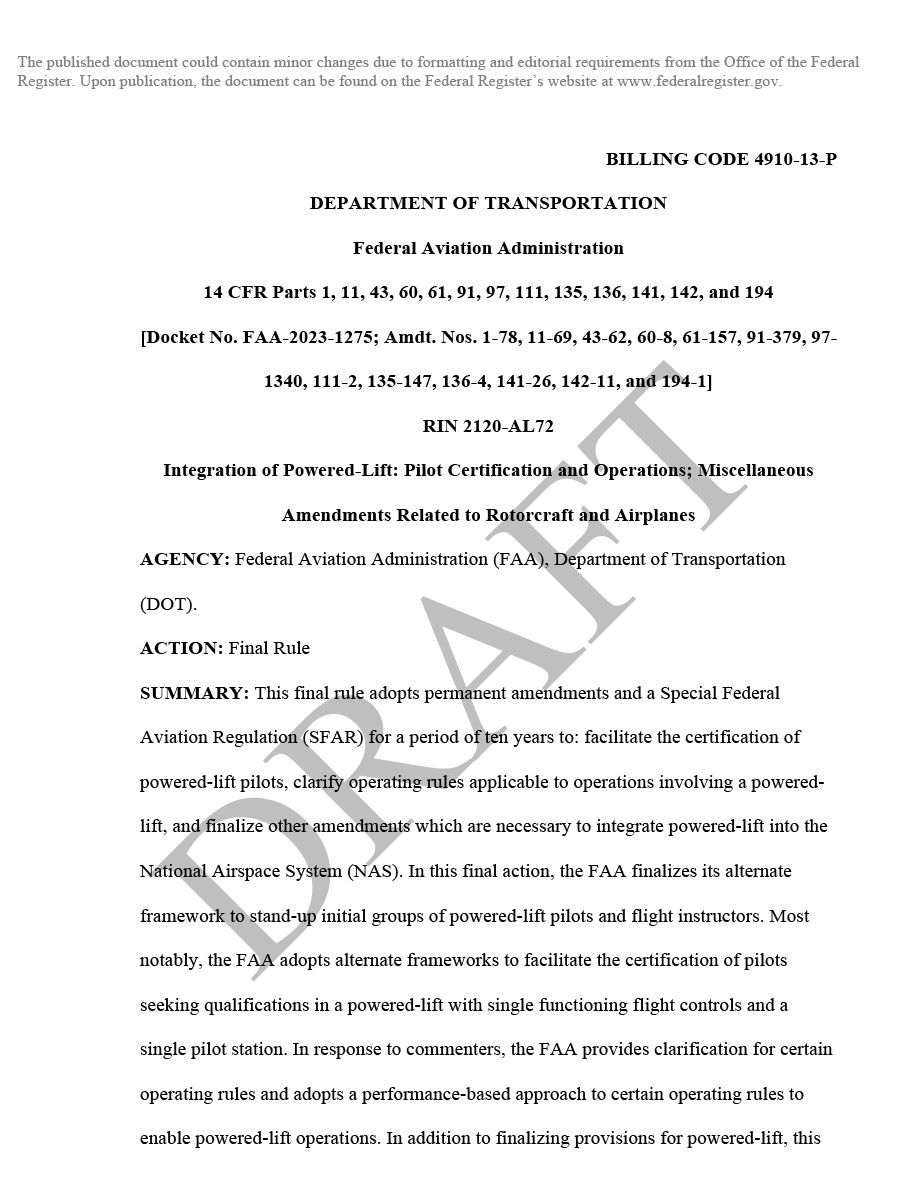This final rule establishes requirements for powered-lift pilot certification and operations, addressing regulatory barriers to integrating these aircraft into the National Airspace System. It creates alternate pathways for pilot certification, enables operations under various parts, and applies specific airplane and helicopter rules to powered-lift. The rule aims to ensure safety as powered-lift enter commercial use.
This final rule establishes requirements for powered-lift pilot certification and operations, addressing regulatory barriers to integrating these aircraft into the National Airspace System. Key provisions include:
- Creating alternate pathways for pilot certification
- Enabling operations under Parts 91, 97, 135, and 136
- Applying specific airplane and helicopter rules to powered-lift
- Establishing type rating requirements for powered-lift pilots
- Modifying dual control requirements for training
- Updating fuel reserve and visibility requirements
- Revising minimum safe altitude rules
- Allowing use of Copter Procedures when authorized
- Expanding simulator use in training The rule aims to ensure safety as powered-lift aircraft enter commercial use, supporting advanced air mobility development.
The document “Integration of Powered-Lift: Pilot Certification and Operations; Miscellaneous Amendments Related to Rotorcraft and Airplanes” contains the following major sections:
- Executive Summary
- Authority for this Rulemaking
- Background
- Powered-Lift Type Certification and FSTD Qualification
- Certification of Powered-Lift Pilots
- Operational Rules for Powered-Lift
- Air Traffic Operations
- International Operations for Powered-Lift
- Advanced Air Mobility
- SFAR Framework and Duration
- Autonomous Powered-Lift
- Comments to Regulatory Impact Analysis
- FAA Readiness
- Definitions
- Other Comments Related to Powered-Lift
- Related Rulemakings
- Severability
- Regulatory Notices and Analyses
- Executive Order Determinations
- Additional Information


